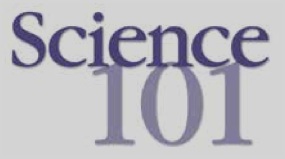Science 101
By Mary Bigelow
Posted on 2014-05-31
 Each issue of Science & Children, NSTA’s elementary school journal, features the column Science 101 with explanations of various topics and phenomena. These are written for teachers and include many examples and illustrations. The author is Bill Robertson, who has also written the NSTA Press book series, Stop Faking It! Finally Understanding Science So You Can Teach It.
Each issue of Science & Children, NSTA’s elementary school journal, features the column Science 101 with explanations of various topics and phenomena. These are written for teachers and include many examples and illustrations. The author is Bill Robertson, who has also written the NSTA Press book series, Stop Faking It! Finally Understanding Science So You Can Teach It.
If you need some background on a topic, regardless of the grade level you teach, this is the place to go. The topic usually corresponds with the theme of the journal that month and clears up misconceptions and provides a context for many of the activities in the other articles. They are not lesson plans as written but provide a “background booster.” These articles are written in a user-friendly style, and they could also be used by secondary students.
Even you subscribe to a different print journal, you still can access these articles online, to read them and add them to your Learning Center Library. Here is a recap of topics this school year, along with comments from reviewers and some related SciLinks:
- Science 101: What Causes Friction? He [Bill] gives a very simple and easy to understand description of friction. He also gives a simple explanation of adhesion and cohesion. He uses several illustrations to explain friction. He says friction was “invented”….read the article to find out why!! [SciLinks: Friction, Force and Friction]
- Science 101: What Do Energy Drinks Do to Your Body? This EXCELLENT article about energy drinks should be published in all the NSTA journals. It is very informative and describes the pros and cons of drinking energy drinks. It gets into the chemistry of energy drinks and what they do to the human body.
- Science 101: What Is the Physics Behind Simple Machines? As teachers we teach simple machines, but seldom do much with the physics behind them. In this article, Bill shows several simple ways to explain the physics concepts that he calls “force-for-distance trade-off”. [SciLinks: Simple Machines]
- Science 101: If Energy Is Neither Created Nor Destroyed, What Happens to It? This article does a magnificent job of looking at energy in a way that can be explained to middle school or above students, while providing wonderful background for teachers of all ages. I especially appreciated how Dr. Robertson provided a connection between energy and the ecological pyramid. The examples within the text are common place enough for students to be able to see what it means, “To lose energy.” [SciLinks: Food Chains, Food Webs]
- Science 101: What Determines the Quality of Musical Notes? The author of this article gives a very clear explanation of frequency and pitch, after which he goes on to explain timbre. He also gives several easy experiments to demonstrate this. Websites are suggested to help teach the concept of timbre. Basically, timbre mostly depends on how experienced the musician is in the usage of their instrument or voice. [SciLinks: Sound Quality]
- Science 101: What Causes Major Wind Patterns, Such as Trade Winds? One such broadly held misconception that teachers pass on to their students is summed up in this simple statement: “Warm air rises.” You may have used this statement to explain why it is hotter in the second floor of a two-story home. The truth is, warm air is less dense than cooler air. All air will be impacted by gravitational pull and will tend to sink unless forced up and out of the way by something denser. I loved Dr. Robertson’s demonstration of water and oil to help explain this point. If you are going to teach weather patterns, this is a must-read article. [SciLinks: Winds, Wind Currents, Atmospheric Pressure and Winds]
Disclaimer: The views expressed in this blog post are those of the author(s) and do not necessarily reflect the official position of the National Science Teaching Association (NSTA).


